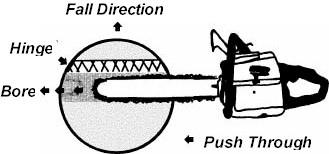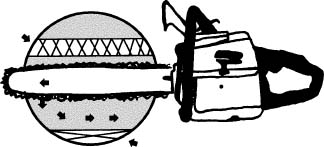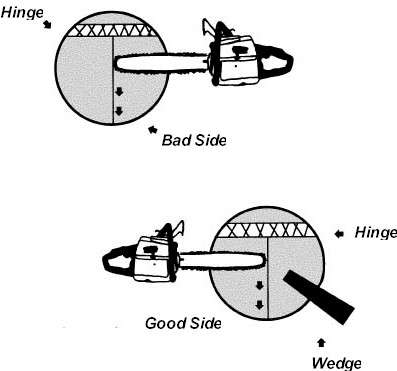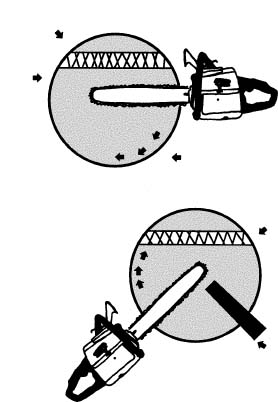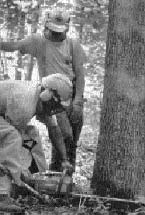
Tim's Tips
The Back
Cut
| The
back cut is important because the execution of this cut determines the proper formation of
the hinge and releases the tree for falling. Before determining the proper technique for
the back cut, the chain saw operator must determine if the tree has forward or backward
lean. This process is actually number 5 in the information gathered before felling.
1. Small Trees and Trees with Little or Forward No Lean - Loggers often cut small merchantable trees or trees with little or no forward lean that do not need wedging. The best way to cut these trees is to make the open face notch and cut straight in from the back. Make sure sufficient hinge is left to control these trees. Some trees may need a push by hand to get them falling. If the tree is big enough, a wedge can be inserted behind the saw. 2. The Bore Cut - Trees with backward or forward lean pose some difficulty and generally require the formation of a proper hinge prior to completing the back cut. On these trees it is recommended that the logger use the bore or plunge cut as the first step in making a back cut. When attempting a bore cut, it is very important to always use the attack corner of the chain saw bar. The attack corner is the bottom corner of the bar. Never use the kickback or top corner as kickback might result. It is also very important for the teeth to be properly filed as discussed earlier and that the saw be run at maximum RPM. |
